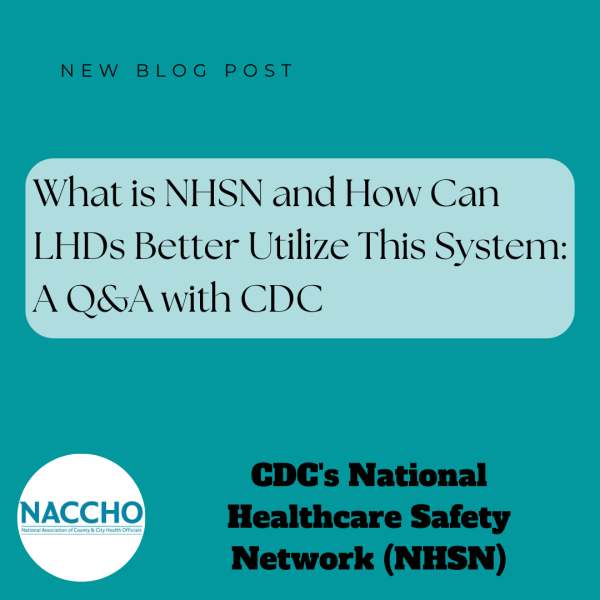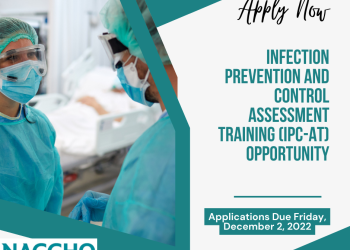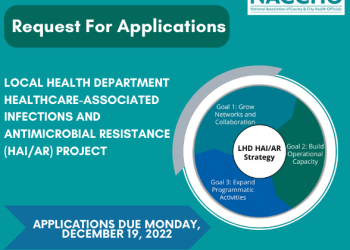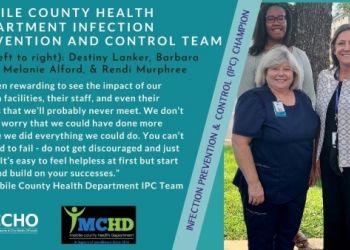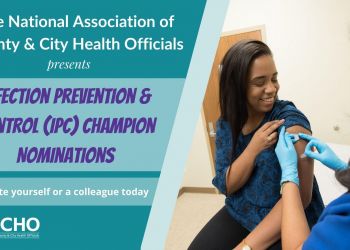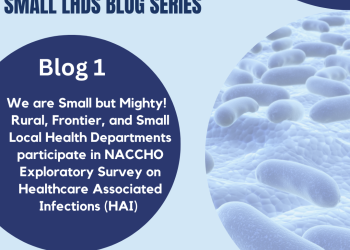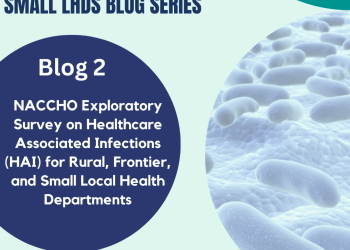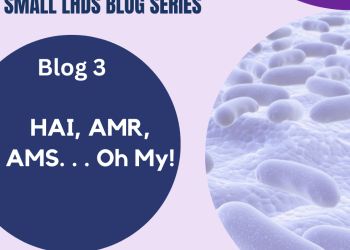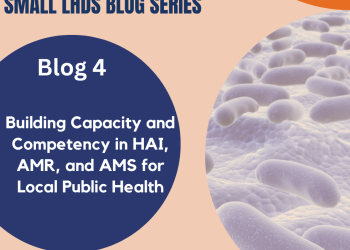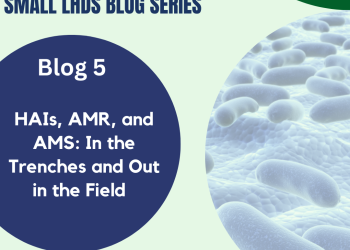CDC’s National Healthcare Safety Network (NHSN) is the nation’s tracking and response system used to identify emerging and enduring threats across healthcare, such as COVID-19, healthcare-associated infections (HAIs) and antibiotic-resistant (AR) infections. NHSN now serves over 38,000 healthcare facilities including acute care hospitals, long-term acute care hospitals, psychiatric hospitals, rehabilitation hospitals, outpatient dialysis centers, ambulatory surgery centers, and nursing homes, with hospitals and dialysis facilities representing the majority of facilities reporting data. NHSN provides facilities, states, regions, and the nation with the data needed to identify problem areas, measure the progress of prevention efforts, and ultimately eliminate HAIs.
NACCHO receives many questions from Local Health Departments (LHDs) surrounding the process for requesting NHSN access and how to get the most use out of this resource. To help simplify the process and answer some of these questions, NACCHO asked Team Lead for NHSN Policy & Operations, Lauren Wattenmaker from the Centers for Disease Control and Prevention (CDC), Division of Healthcare Quality Promotion about NHSN to understand what it is, the value of the data, the different options LHDs have for accessing it, and which NHSN data may be most suitable to the LHD’s needs.
What should LHDs know about NHSN?
NHSN is the largest surveillance system used by healthcare facilities for monitoring patient safety and emerging threat events. In 2020, CDC quickly adapted NHSN to track information for the U.S. COVID-19 pandemic response. Emerging threats have been added since the start of the COVID-19 public health emergency to collect data on capacity in healthcare facilities, vaccinations, staffing, and supplies. CDC plans to continue to collect healthcare capacity data in an ongoing effort not only for COVID-19 but other emerging threats relevant to healthcare. NHSN has also been used by hospitals and other healthcare facilities since 2011. Some of the main uses are for the Centers for Medicare & Medicaid Services (CMS) and for state and local reporting. Healthcare facilities report patient safety data through NHSN in order to be compliant with the quality reporting programs for CMS and for many state and local jurisdictions. CMS and public health agencies use that data in turn to post publicly on their compare websites so members of the public can review quality data for healthcare facilities as they decide where individuals want to receive care either for themselves or for family members.
NHSN is also used for benchmarking internally in healthcare facilities so they can track their own progress for HAI prevention and response. CDC’s message for LHDs is that LHDs have the ability to gain access to data reported by facilities in their jurisdictions. Meaning, LHDs can create a Data Use Agreement (DUA) with facilities, which will enable them to access a variety of patient safety data from many different healthcare facilities and look at ad hoc data requests if there are specific prevention activities the LHD would like to undergo. Outbreak investigations data also enable health departments a better understanding of what is going on and allows LHDs to develop prevention activities.
What are the options for a LHD to access NHSN data and the pros and cons for each of these options?
Reference here for the full table on options for NHSN data access by health departments
In NHSN, there is a function referred to as the Group function, this is a way for third party users of NHSN to access data, such as a LHD or hospital association. The Group function will enable users of the group to access specified data reported by the facility Group members of NHSN. This is often used by LHDs. The drawback is that individual facilities need to confer data rights to the Group, meaning the group users can only access data from facilities within the application consented for particular data shared.
Another option is for the health department to complete a data use agreements (DUA) with CDC. DUAs enable a state/local health department to access specified HAI data reported by facilities in their jurisdictions for public health surveillance and prevention purposes only and not for public reporting. This option operates in the same way where you have group users and facility users of the Group. With a DUA, however, CDC confers data rights on behalf of the facilities (nothing the facility needs to do). The Group is not dependent on individual facilities consenting for their data to be accessible. For State/Local health departments that have reporting mandates, CDC can also create a Group and confer data rights on behalf of the facilities in the group’s jurisdiction. Additionally, data can be accessible to a health department for HAI prevention activities and outbreak investigation. The data you receive, however, will be a static dataset instead of access into the NHSN application. In this option, facility identifiers cannot be made publicly available, therefore, the data needs to be kept confidential at the health department.
How can LHDs request access to datasets from NHSN?
LHDs can request access by emailing CDC NHSN representatives at [email protected]. In your request, please include the purpose for what the data will be used for as this helps determine which NHSN option would work best for your health department. In addition, state whether the LHD wants to access this data either under a new jurisdictional reporting requirement, or a specific project your health department is undertaking. After the initial email, a CDC NHSN representative will reach out to discuss further your data request and review any other questions.
After NHSN access is granted, what kind of datasets or information can the LHDs expect to receive?
It depends on the project and needs of the health department! For an outbreak investigation request, LHDs can receive patient-level data. For a non-outbreak HAI prevention activity request, LHDs are limited to facility-level data. NHSN is flexible in the file format LHDs are able to receive. Example file formats are SAS, secure file transfers, and secure file sharing websites.
When the LHD and NHSN representatives connect, the NHSN representatives will get an idea on what the health department is looking for, the types of variables, and what the goal of the request and you can discuss your preference on file formats based on the LHDs needs during this conversation. Overall, receiving NHSN data is very fluid and granted access starts by sending just one email with your purpose to get the conversation started!
What have you heard from LHDs about how they use data from NHSN? Any specific information about using data obtained via a dataset request?
Dataset requests were implemented in 2018, and prior to COVID-19 there were only a few dataset requests. CDC is excited to offer this information and make it more publicized! LHDs can use NHSN data for prevention projects, such as for antibiotic use and resistance data. Other projects include dialysis information and looking at bloodstream infections, MDROs in various settings, healthcare worker influenza vaccination uptake, and COVID-19 data. Under the NHSN Agreement to Participate and Consent, the user agreement that all facilities participating in NHSN sign, CDC can allow any health department to access COVID-19 data, including COVID-19 vaccination data due to the nature of the ongoing outbreak.
Looking to the Future of NHSN
NHSN is expanding and moving into the territory of collecting ongoing hospital capacity data. This will be beneficial for circumstances like emerging threats, including environmental threats like hurricanes. The idea is for health departments to be able to view in NHSN capacity data for hospitals or other facilities in their jurisdictions. This is just one upcoming way LHDs will find NHSN data particularly useful, with more uses to come!
Resources
Data Use Agreement FAQs for Health Departments and Facilities: https://www.cdc.gov/hai/state-based/dua-faq.html
NHSN Main Page: https://www.cdc.gov/nhsn/index.html
